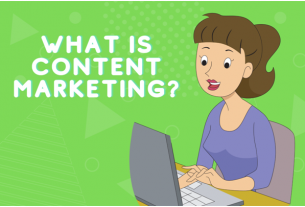The thing you need to make sure your keywords are well ranked is quality content that must first and foremost relate to the topic and purpose of the page. The content itself must also be valuable and beneficial for visitors, as well as search engine optimized. By providing high-quality content that often generates feedback from visitors and a desire for more information, it enables you to better meet your business goals. So are SEO goals like getting back links or sharing your content.
When we talk about search engine-optimized content and text, we mean that it is understandable to search engines, what your content is about, and for what keywords it should be searched.
Keyword analysis: Find the right keywords
Every SEO strategy begins with finding out what keywords you want to include in your content. Without knowing them, you don’t have a chance to optimize your site for search engines. The process of finding which keywords are interesting to your business is called keyword analysis. This is a part of the Small Business SEO Services.
Where does this keyword analysis begin? Your company has certain goals it wants to achieve and it is essential that your SEO strategy supports them. You also have a target customer segment. So focus on them:
- What keywords does your target audience use?
- What do they intend to do when they search for these keywords do they want to buy or just look for more information?
- Are people looking for these keywords?
- Is it real that they will be well placed with regard to the competition?
All these questions should be answered during keyword analysis and search. The analysis output is then a list of keywords that you include on your site.
Keyword strategy: Include keywords on your site
Your keyword strategy accurately describes how to incorporate the individual keywords you identified in your analysis. This way, you can help search engines better understand for which keywords a page should be placed in search.
First, allocate keywords to pages based on relevance. If you’re targeting a set of keywords with similar meanings, then put them on the same page. Also take into account the fact that your highly competitive keywords need to be spread across the strengths of your site. A great example of strength is your home page.
After you have mapped the appropriate keyword layouts for the pages you specify, define exactly where to put each word on those pages. As a guideline, pages with less text content should be optimized for one or two keywords. Conversely, pages with large content, such as over 500 words, are often optimized for 5 to 10 keywords.
So, where do you put these keywords?
The most important places are in the meta description, headings, in the text itself and in the links.
Meta information
When we talk about Meta information for SEO, we mean the title tag and Meta description. In the image below you can see the page title marked in an orange box and the Meta label in blue.
Page title tag
Page title has long been one of the most important factors for search algorithms. The title tag describes the main focus of the page in a single short phrase. The title tag is displayed in the browser tab, but more importantly, in the Search Engine Result Pages (SERP) result. Each of the results contains a brief info about the page, called a snippet.




